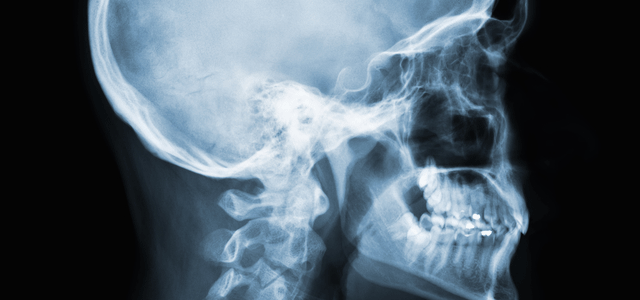
In the past two decades, the world of dental technology has grown in leaps and bounds, making the diagnosis of trauma, and the pinpointing of developmental concerns much more accurate than ever before. One tool that can be used to assist in these tasks is called Cephalometric Analysis, or more simply, a Ceph.
What is a Ceph?
Cephalometric Analysis is an X-ray similar to a panoramic X-ray, in that it has the capability of capturing a full view of your skull and neck. A difference is that it is captured using a side-to-side sweeping motion, instead of the full 360 degree non-stop motion used in panoramic X-rays. When complete, a Ceph looks like the image seen here.
Do you need one?
Well, perhaps. It really depends on the type of issues your oral health care practitioner is trying to diagnose. It has become fairly standard practice to have at least a Ceph or panoramic X-ray done before and after orthodontic work. Staggered scans in the middle of such efforts may also be done depending on need.Also, if you play contact sports and suspect a fracture, you may benefit from a Ceph. In fact, if you go to a doctor instead of your dentist, you should expect to receive a scan of your skull in order to diagnose any pain you may be experiencing.
What are Ceph X-rays used for?
Ceph X-rays are generally used to diagnose developmental concerns involving the head, neck and jaw that a dentist, orthodontist or surgeon believes may be interfering with proper facial and oral development.They are commonly used to:
- Explore possible TMJ concerns
- Assess the reasons behind excessive tooth misalignment – particularly in cases where an overbite or underbite is present
- Diagnose suspected tooth and/or jaw fractures
- Obtain precise measurement of teeth including their root structures
- Or, plan for orthodontic work
Like other types of X-ray tools, Cephs can be performed as either digital or film scans depending on availability within your dentist’s office, or your preference.
